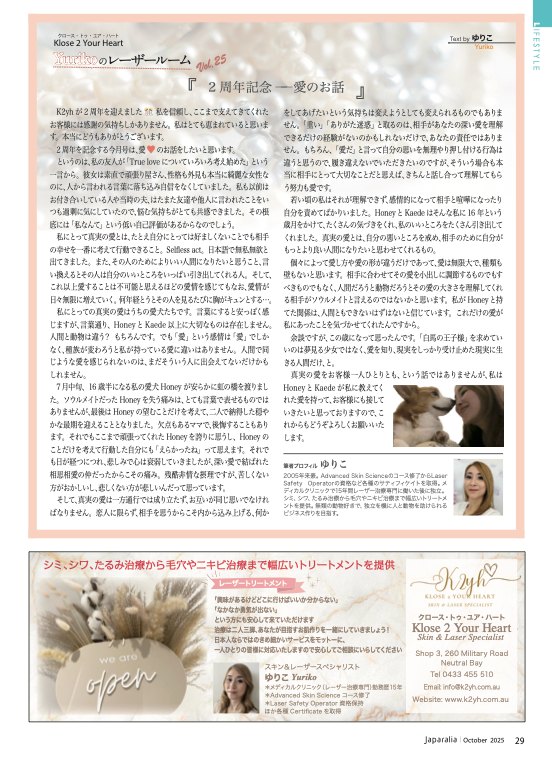Japaralia March 2024 vol. 6
- Yuriko Ono
- Feb 29, 2024
- 3 min read
Google translate below for English readers.

Vol. 6 "L.S.A.E.R."
The word "laser". It's a very familiar word, but I don't think many people know its true meaning. Laser is an abbreviation for “Light Amplification by Stimulated Emission of Radiation,” a word that will make you bite your tongue. Laser technology is used in many fields, not just beauty treatments. Today, I would like to briefly talk about lasers in the area of beauty treatment.
There are countless types of beauty treatments, including photofacials, HIFU, NdYag, CO2, RF, Redlight, and more. In general, some people refer to these treatments collectively as laser treatments. However, among the lasers mentioned above, there are only NdYag and CO2 lasers. There are many other lasers, such as ErYag, QSwitched NdYag, Diode, and Alexandrite, but the names of lasers are determined by their wavelength. The "reaching distance" of the laser differs depending on the wavelength. For example, if NdYag's 1064nm, the laser will only reach a depth of 1064nm and treat the target there. In other words, targets at other depths will be passed through or never reached. It is possible to adjust the depth to some extent by changing the size of the spot that is applied, so when treating pigment, changing the spot size allows treatment not only at the depth of one point but also at several depths around it. For those of us who work with lasers, it is essential that we have the ability to judge the depth of skin problems. Photofacial is a treatment using light rather than laser. This wavelength ranges from 500nm to 1200nm. When you turn it on, it's like electricity that lights up the whole room. It is possible to adjust which wavelengths are used depending on the skin target, but unlike lasers, the entire path of the light is affected. RF uses radio waves to generate heat, CO2 laser vaporizes skin tissue with carbon dioxide gas, HIFU focuses ultrasound waves on a single point and heats it, and Redlight uses his 630nm light, each with its own characteristics. It will be endless when taking about laser but in short, each will have different effects and reach.
Additionally, different types of lasers target different pigments. The molecules that absorb laser and light energy are different, such as those that are absorbed by brown or black substances such as melanin, those that are absorbed by red cells such as red blood cells, and those that are absorbed by water rather than color. In other words, if you want to treat age spots and only use a wavelength that is absorbed by red color, it will not affect age spots, and if you want to treat a specific area and use a laser that is absorbed by water, Any area that comes into contact with moist skin will be affected, so the person performing the laser treatment must control where the laser hits the skin. For HIFU, RF, etc., the target dye is not relevant.
I can't explain everything in one column, so I've only briefly talked about it, but I hope I was able to explain the simple question of ``laser,'' which is often used, but what does it really mean? Recently, many people have become interested in beauty treatments, and many of them have done their own research before coming to see me, which makes me very happy. By gaining knowledge about skin and treatment, patients will be able to trust the practitioner who is explaining the treatment during the consultation and will be able to decide whether or not to treat the problem. The regulations for those using lasers in NSW are not strict, so the reality is that there are operators and doctors who lack knowledge and experience. Your face and body are important, so you want to have them treated with peace of mind. I still have a lot to learn, and I will continue to study hard to deepen my knowledge.







Comments